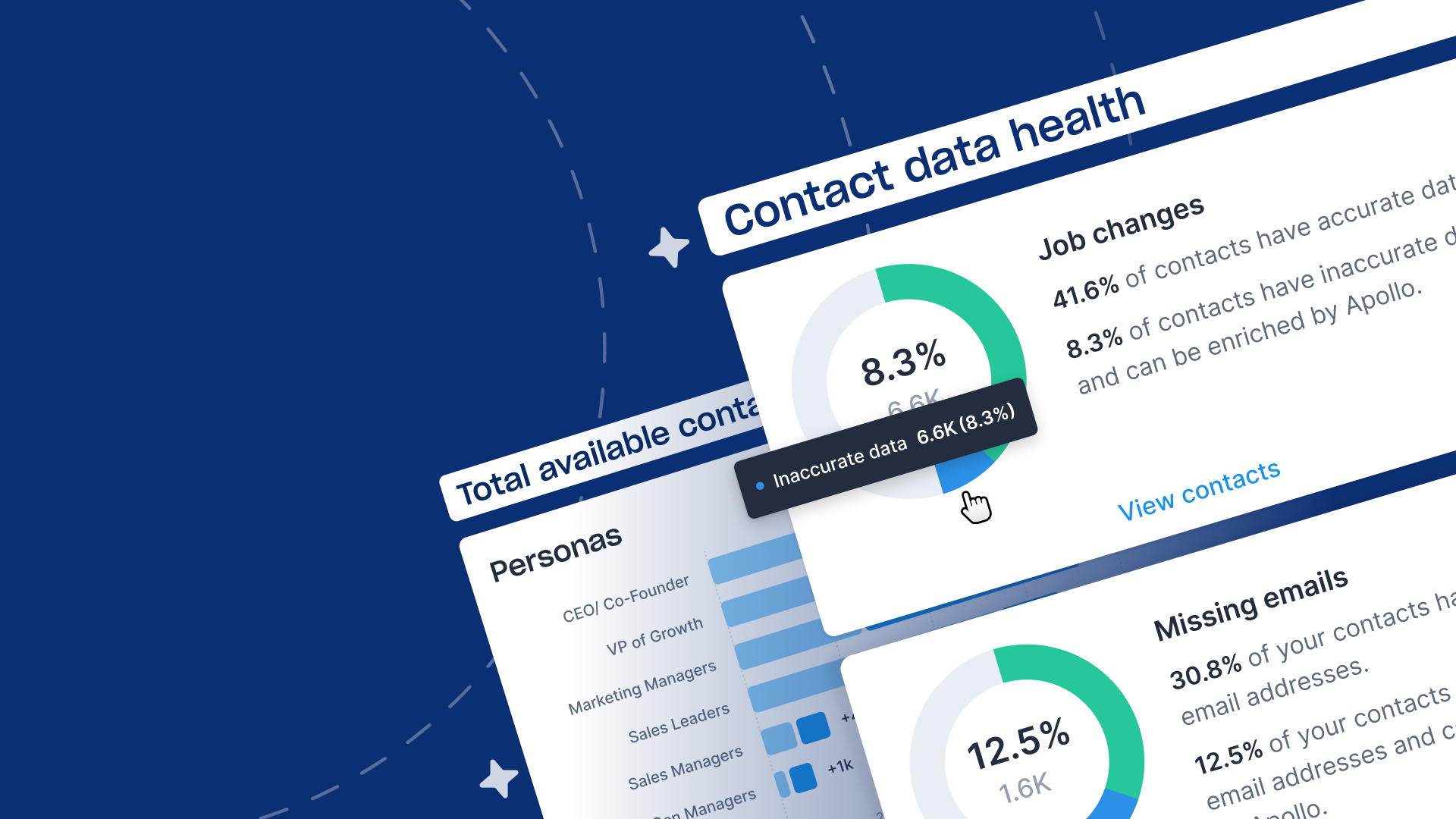As a product marketer at a sales tech company, I think about sellers a lot.
Specifically, sales development reps (SDRs), the unsung heroes of the sales world. SDRs play a crucial role in a company’s success — often working between 200 and 500 contacts at a time to surface new opportunities.
A host of AI-powered tools have been released recently, all promising to make an SDR’s life easier. If true, this could be transformative to businesses and SDRs everywhere. Given the potential of these products, I wanted to cut through the hype to understand how good these tools actually are.
Sure, they can write an email for you, but is it a GOOD email? How personalized can it truly be if it’s not connected to the data? And how well do these tools scale?
This article documents my experiment with 4 AI tools, and includes my honest opinion on each.
In the end, I’ll try and arrive at an answer to the question that every SDR has likely been wondering about.
Is AI here to take my job?
Setting up the Experiment
To arrive at an answer, I tried four tools: ChatGPT, GPT-4, Lavender, and Copy.ai.
There are three things I graded on a scale of 1 to 10.
- Quality
- Personalization
- Scalability
To run this experiment, I picked my coworker Josh Garrison as my pretend prospect. He’s the Head of Content Marketing at Apollo.
Let’s pretend that I work at a content management software company called BestCMS. I want to get in touch with Josh and book a meeting with him. To do this, I’ll ask each AI tool to create a sequence of personalized emails that will address Josh’s specific challenges.
Using Apollo, I’m able to find all the relevant information about Josh I need pretty quickly.

Using Apollo, I find his name, contact data, current title and company, work history, and interesting insights about his company. I see that before Apollo, he spent 2022 as the Head of Revenue at Teamflow and 2021 as a Sr. Growth Marketing Manager at Autodesk.
My emails should address these insights about Josh. I also know that Josh doesn’t have time to read long, dry emails. So I need the emails to be concise, punchy, and straight to the point.
Now that we’ve got all that out of the way, let’s dive into the four tools I’m testing for this experiment: ChatGPT, GPT-4, Lavender, and Copy.ai.
ChatGPT: The AI used ‘round the world
My ratings:
- Quality: 7
- Personalization: 5
- Scalability: 3
Let’s look at ChatGPT.
ChatGPT is a great tool, and I love the fact that it’s free. It does everything from giving you synonyms of a word to passing the US Bar Exam. But for the sake of this blog, I just want it to write me a few personalized emails I can use in a sequence to get Josh to book a meeting with me.
Let’s start with a basic prompt and see what it does.
Prompt to ChatGPT:
Write a three-step email sequence that will convince Josh Garrison to book a meeting with me. Here’s all the information you need. Make the emails concise. Include a catchy subject line for the first email.
- Josh is currently the Head of Content Marketing at Apollo
- Apollo is a sales intelligence and sales engagement platform
- He spent 2022 as the Head of Revenue at Teamflow and 2021 as a Sr. Growth Marketing Manager at Autodesk
- He’s not only moved up in the org but he’s also switched around his responsibilities
- Apollo raised $110M Series C in 2022
- His first ever job was as an Inside Sales Rep
- My name is Jacob Mieso
- My company is BestCMS
- BestCMS streamlines processes for content teams. Our solution simplifies content creation, management, and delivery, enabling teams to deliver better content faster.
The first emails ChatGPT gives me are a good start, but they’re too long. So I ask for them to be shortened.
Then it gives shorter emails, but the personalization isn’t as strong.
I do some back-and-forths with ChatGPT, asking it to make things “more concise but still personalized” so that they are mobile-friendly. Finally, I get something I like.
These are good, but are they the best emails I’ve ever seen? Not quite. I’d still take another 5 minutes to edit these before sending them out.
Although I am satisfied with the quality and personalization, and I love that it was able to give me three cohesive emails, it took me a few tries to get here. I had to research Josh and provide ChatGPT with all of the necessary information. In total this took about 10 minutes for just one lead.
This would never work at scale. Safe to say, ChatGPT is not taking your job.
GPT-4: The latest and greatest in AI
My ratings:
- Quality: 8
- Personalization: 7
- Scalability: 3
While I was in the middle of writing this blog, GPT-4 was announced. Naturally, I had to try it.
I’ve already been a big fan of ChatGPT so I couldn’t wait to see the improvements the team at OpenAI made with GPT-4.
I give it the same prompt as ChatGPT and click enter.
The quality of GPT-4 is (unsurprisingly) as good as one can expect from an AI writing tool, and it includes all of the relevant information I provided. The tone is friendly and conversational, which I hadn’t prompted it to do. It also follows up on every email in a logical way.
The downside is, like ChatGPT, the emails are too long. Nobody likes reading chunks of text and they’re not friendly on mobile devices. I need concise and better-formatted emails to capture Josh’s attention.
So I ask GPT-4 to remove large chunks of text and make the emails concise. After a few back-and-forths with GPT-4, I get emails that I like.



Honestly, I can use these out of the box. GPT-4 not only writes personalized copy, it recognizes Josh is a manager and includes value propositions for his team as well. I could do without the line introducing me in the first email, and I may tweak a few small things, but man – this is good.
But, like with everything, it has its drawbacks. For starters, it needs to be fed any and all data to create content that’s personalized.

It also took me about 7 minutes to get to the final result. If I’m an SDR working 200 to 500 leads, that’s anywhere from 1,400 to 3,500 minutes of time spent in GPT-4.
My takeaway: with the right request, GPT-4 can provide high-quality, personalized copy that gives SDRs a launching-off point to create killer messaging. But in terms of replacing SDRs themselves? I wouldn’t quite count on it.
Lavender: AI solely focused on email
My ratings:
- Quality: 8
- Personalization: 6
- Scalability: 2
Next up, we have Lavender.
One thing I love about Lavender is when I type Josh’s email address in, it shows me his email is verified. Obviously, this is super important.
Lavender also has a profile modal that gives me information about Josh. Unfortunately, most of the information is outdated. It still shows Josh as the Head of Revenue at Teamflow. It highlights an article about Apollo’s $32M Series B round and not the most recent $110M Series C round.
If I personalized my email based on the info Lavender provides I’d likely end up in Josh’s deleted folder. Who’s going to look favorably at an email with out-of-date information?

Lavender can generate emails based on its profile modal, but since the data on Josh is incorrect I decide to use the first email from ChatGPT and see what Lavender does.
Lavender’s Email Assistant is useful for understanding the good and bad parts of your email. With a readability score and detailed areas of improvement, it’s easy to see Lavender gives SDRs clear direction on improving their emails.

I finally get an “A”, but the “Writing Time” shows it took me almost 10 minutes to get this one email. That means I’d be spending 30 minutes on a three-step sequence. Yikes.
Lavender is great for reviewing one-off emails and providing high-quality edits and suggestions, but that’s what it does best — editing. The contact data it provides is out-of-date which can lead to unreliable copy suggestions.
Lavender is a helpful tool for SDRs, but until it learns how to write multi-step sequences (or gain consciousness…), it’s not coming anywhere near your job.
Copy.ai: AI for sales and marketing teams
My ratings:
- Quality: 4
- Personalization: 4
- Scalability: 2
Lastly, let’s look at Copy.ai.
I notice right out of the gate that Copy.ai has a wide range of email templates to work with in their free version. As an SDR sending more than just cold emails, this is beneficial.
For this experiment, I try their Cold Outreach Email tool. It gives me a blank slate to fill out, so I plug in all the relevant information.
After clicking “Create Content” it spits out a few different options.


To be frank, I wouldn’t send any of these. Some are too long, most have big chunks of text that won’t look good on mobile, and they all start by introducing me.
I doubt Josh would be interested in BestCMS if I used these emails.
Where’s the data? Where are the specific suggestions? The final product is not personalized and, ultimately, full of copy that would take a significant amount of time to revise. Copy.ai could be a good starting point, but of the four, I’d say it’s the weakest option.
I can confidently say Copy.ai isn’t taking your job.
My Final Thoughts
So, will any of these tools be taking your job? No, they won’t, and they probably never will.
But, with the right tool, AI can be a powerful way for you to save time AND get results.
Apollo AI: AI-generated, data-backed emails
While all of these tools were able to write personalized emails for me, to be honest, they all took me longer to use than it would take for me to just…write an email.
To address that issue — and many others — the team at Apollo has been working on our own AI-powered sales assistant.
Don’t worry, we’re not coming for your job (but we do hope to make it easier).
If you’d like to sign up for the beta, you can do that here.
Thanks for reading!





